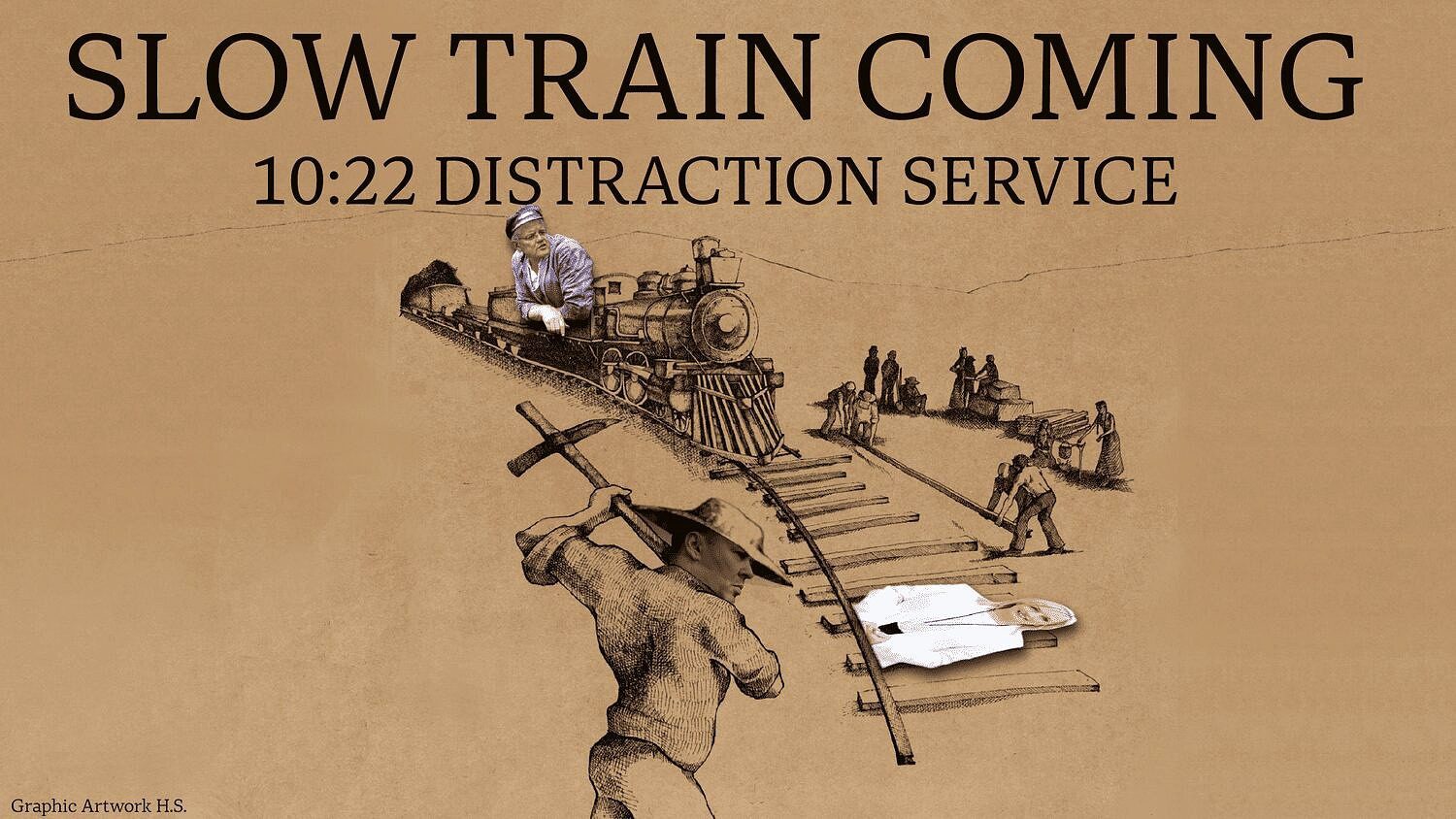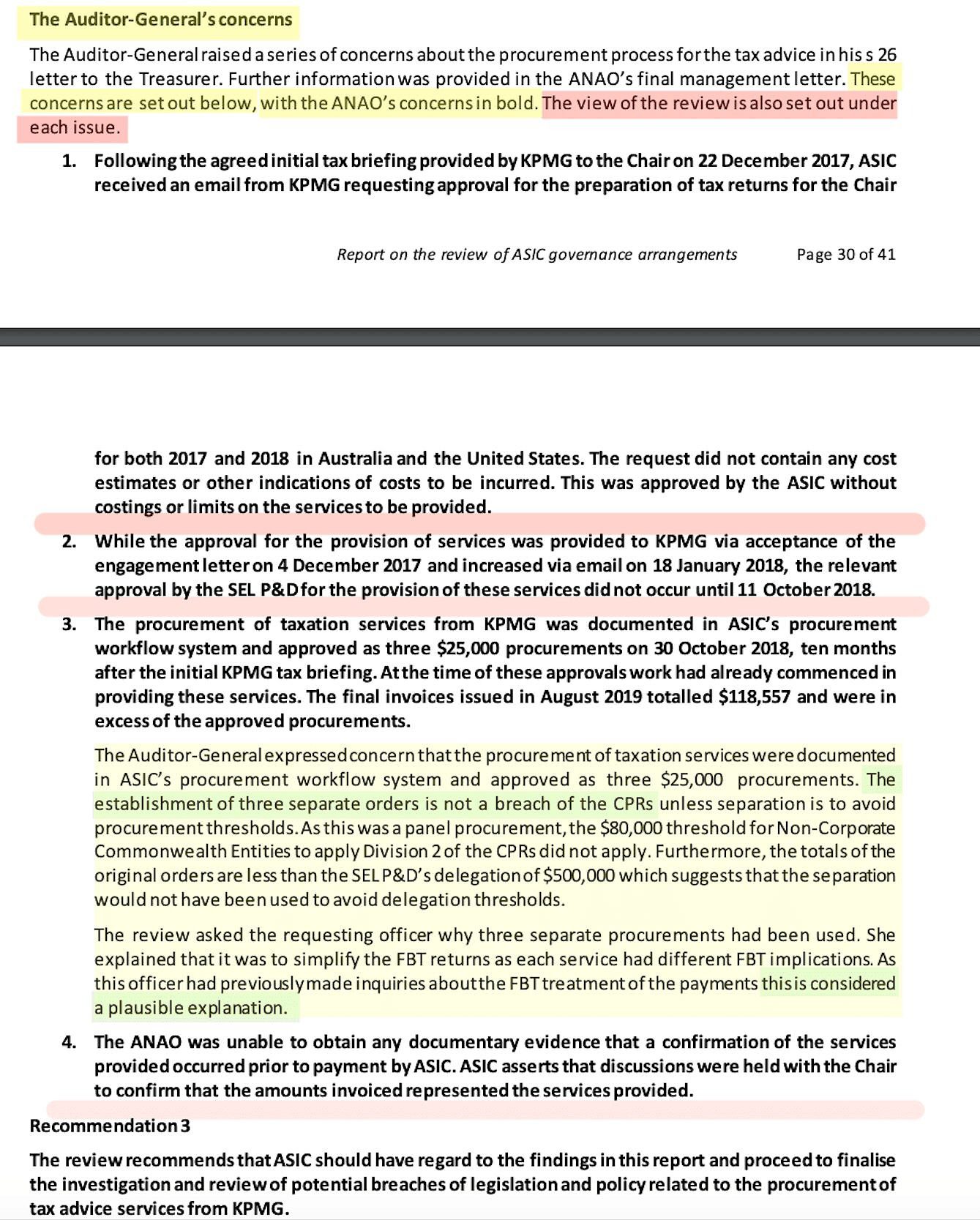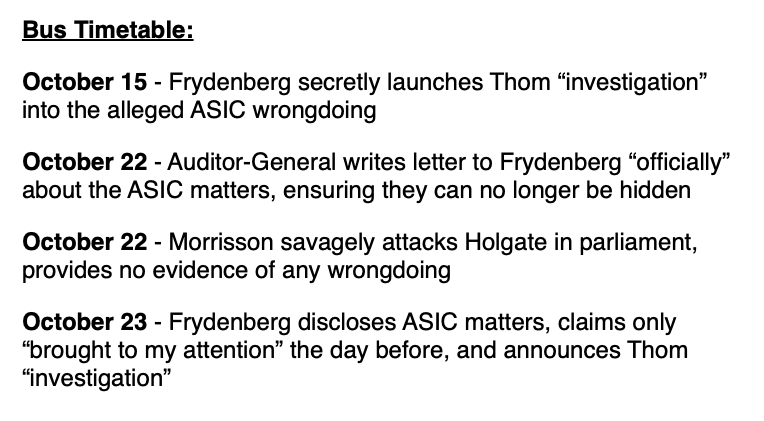Appreciate our quality journalism? Please donate here
EXCLUSIVE
The Federal Government knew it would be forced to reveal to the public top-level allegations of serious corruption at the corporate regulator well over a month before the Prime Minister publicly savaged Australia Post CEO Christine Holgate.
Scott Morrison’s treatment of Holgate has attracted renewed focus, with the Federal Government seeking to exploit the shock death of Labor’s Kimberley Kitching.
Kitching died of suspected heart-attack less than two weeks ago, aged 52, and the Federal Coalition has sought to frame the tragedy as being the result of “bullying” by female Labor colleagues.
The exercise is widely viewed as a cynical and desperate move by a government well down in the polls just weeks out from a likely election, yet the so-called “mean girls” narrative is being aggressively pushed by large sections of the media and so continues to dominate airwaves.
This story involves corporate regulator the Australian Securities and Investments Commission (ASIC); the government’s postal service Australia Post; the Prime Minister; and Treasurer Josh Frydenberg.
Remarkably, it also involves Kitching herself.
“Remarkably, it also involves Kitching herself”
Morrison launched his infamous attack on Holgate in Federal Parliament on October 22, 2020.
That was despite there being no evidence of any wrongdoing by Holgate – and Morrison providing none.
The Prime Minister’s attacks on the Australia Post CEO included threatening her job.
Holgate had legally, and well within guidelines, given a Cartier watch to each of four senior employees as a bonus for closing a major deal, with the watches costing a total of $20,000.
Despite Holgate having engaged in no wrongdoing, the public attacks by the Prime Minister meant the matter, highly-predictably, gained wall-to-wall media coverage – including saturating the weekend newspapers.
Morrison’s attacks were on Thursday afternoon, October 22.
But it was the next day, on Friday October 23, that a real corporate governance scandal – one that involved actual wrongdoing – emerged.
The top two bosses of corporate regulator the Australian Securities and Investments Commission had been overpaid by almost $200,000 – including $118,000 in alleged “tax advice” given to ASIC chair James Shipton.
It was, and remains, the biggest scandal in ASIC’s 30-year history.
Both Shipton and his deputy, Daniel Crennan QC, ultimately lost their jobs over the affair.
Yet it was the manufactured Holgate “scandal” that, highly-predictably, dominated the media cycle.
Amid the saturation Holgate coverage, the Federal Government, on Friday October 23, released the news about ASIC.
It was made to look like the government had only just been made aware of the extremely serious ASIC matter (and so was unconnected to the manufactured Holgate “scandal” the day before).

October 22 Distraction Service – The Holgate attacks served as a smokescreen for the actual scandal at ASIC. Source: HS
On Friday October 23 Treasurer Josh Frydenberg issued a press release stating he had “received correspondence” the day before (Thursday October 22) “bringing to my attention” the ASIC matters.
There would be an “independent review”. Shipton “stood-aside”.
“On 22 October 2020 I received correspondence from the Auditor-General for Australia bringing to my attention matters that he identified while conducting an audit of ASIC’s annual financial statements,” Frydenberg announced on the Friday.
Yet The Klaxon can now exclusively reveal that Frydenberg had known about the impending ASIC scandal – and, more importantly, that it would be forced into the public arena – for at least five weeks.
The serious issues at ASIC – its chair and deputy chair being paid almost $200,000 more than they were legally entitled to under Remunerations Tribunal laws – were uncovered by the Australian National Audit Office (ANAO), which is overseen by the Auditor-General, Grant Hehir.
It has now emerged that Hehir not only raised the matters with Frydenberg, in writing, five weeks before the Holgate attack, but at that time Frydenberg was also made aware that the issue would be made public.
Mr Hehir has disclosed this interaction, in previously unreported comments, made to a senate committee.
“When we wrote to the Treasurer, including providing a copy of the (ASIC) financial audit report, and a covering note to that, we indicated that we would be writing later to raise an issue with them related to remuneration of key management personnel,” Mr Hehir told the committee.
“That was on 15 September.”
That means that on October 22, when Morrison seemingly inexplicably attacked Holgate – over a two-year-old matter which involved no wrongdoing – the government had known for certain, for over a month, that not only was the ASIC scandal coming but that it was unavoidable.
Multi-pronged
As previously revealed, Frydenberg, and the Federal Government, have gone to great lengths to protect Shipton and Crennan.
That includes Frydenberg releasing a doctored version of the “independent review” into the scandal, from which three-quarters of the key “findings” had been secretly deleted.
The difference between the treatment of Shipton and Crennan – who they themselves received almost $200,000 in illegal payments – compared to Holgate – who gave $20,000 of entirely legal bonuses to others – is stark.
The watches issued by Holgate cost an average of $5000 each.
The illegal alleged “relocation payments” to Shipton and Crennan, almost $200,000, were the equivalent of 40 “Cartier watches”.
“The illegal alleged ‘relocation payments” to Shipton and Crennan were the equivalent of 40 Cartier watches”
Despite attempts by Shipton to remain at ASIC he departed last year, several months after the scandal broke in October 2020.
Crennan resigned days after the scandal became public.
The Federal Government’s handling of the ASIC matter – and precisely how it entered the public arena – was highly-orchestrated.
Hehir’s ANAO had been wrangling, behind-the-scenes, with ASIC and Treasury for over a year regarding the illegal payments to Shipton and Crennan.
ASIC and Treasury had done nothing to fix the problem.
For the first time in history, frustrated by the ongoing cover-up, Hehir took steps to ensure the matter become public.
This was by issuing a so-called “section 28” letter: a letter issued to the Treasurer when the Auditor-General has concerns serious wrongdoing has occurred.
Hehir actually – “officially” – wrote that letter to Frydenberg on October 22, the day Holgate was “thrown under the bus” by Morrison.
In fact, the latest revelations show, Hehir had made Frydenberg aware – in writing – that he was going to do issue the section 28 letter over five weeks earlier.
There are various ways a government can influence when, precisely, a section 28 letter is “received” and announced.
Such correspondence usually goes back and forth before an “official” letter is agreed upon and “sent”.
A tale of two “scandals”
Incident:
Holgate: Allocates $20,000 of bonuses, legally and within guidelines, to four other staffers
Shipton: Allocates $118,557 of “tax advice”, illegally, to himself
Gov’t Response:
Holgate: Oct 22: Multi-pronged public attacks from PM, MP Paul Fletcher and MP Mathias Cormann
Shipton: Oct 23: Understated media release posted to Treasurer’s website
Timing of Response:
Holgate: Attacks in parliament ostensibly within hours of government “finding out”
Shipton: Disclosed more than five weeks earlier – after official concerns raised in writing by Auditor-General
“Review” Outcome:
Holgate: Found to have engaged in no wrongdoing
Shipton: Treasurer releases doctored version of review, with 3/4 of “findings” secretly deleted
Gov’t Reaction:
Holgate: Morrison refuses to apologise, despite no wrongdoing by Holgate
Shipton: Frydenberg “clears” Shipton of any wrongdoing, despite providing zero evidence. (Author of ASIC “review”, Vivienne Thom of CPM Reviews, resigns. CPM Reviews, Thom, and remaining ASIC deputy chair Karen Chester all refuse to stand by Frydenberg’s claims that Shipton had done nothing wrong)
Outcome to Date:
Holgate: Departed as Australia Post CEO
Shipton: Remained ASIC boss on full $800,000 pay for over 7 months after Treasurer told of serious concerns by Auditor-General, in writing. Repays the $118,557 illegal “tax advice” payments
Kitching
The Holgate “Cartier watches” matter was raised by ALP’s Kitching on Thursday October 22, 2020.
Kitching was part of a senate estimates committee conducting a routine inquiry into Australia Post, and Holgate was among those providing information.
During the hearing, Kitching asked about the Cartier watch bonuses, which Holgate had issued over two years earlier.
That interaction was relatively benign.
Yet within an hour – and despite it having originated from an ALP Senator – Prime Minister Morrison stood up in parliament and savagely attacked Holgate.
He declared that if Holgate did not wish to stand aside voluntarily “she can go”.
It is extremely rare for a Prime Minister to publicly attack a senior public servant over an issue that they know little about.
Even beyond the obvious reasons, doing so could potentially prove very costly politically.
The “Cartier watch” issue had been raised in a senate committee hearing less than an hour before Morrison launched his attacks.
And it had been raised by a member of the ALP Opposition.
Experts have suggested the most likely scenario is that the Coalition knew Kitching would be raising the watches issues with Holgate on the day.
Kitching has not disclosed where she came by the information about the bonuses, made in 2018, or why she raised the matter on October 22,, 2020.
The Klaxon has asked Kitching and her office (before Kitching passed away) for this information but has received no response.

Frydenberg’s doctored version of the Thom report into ASIC. Treasury’s secret deletions are highlighted in red. Source: Treasury. Emphasis: The Klaxon
Information or “tip-offs” about such matters can often come from anonymous sources.
Experts say that if Morrison had not been not aware of the watches matter before it was raised in the senate hearing, less than an hour before he attacked Holgate, he had taken an extreme – and apparently inexplicable – political risk.
The Federal Government had received the “official” letter from Hehir that day.
It also knew that ASIC would be releasing its annual results, and that its senior members including Shipton, would be fronting a seperate senate committee the following day, Friday October 23.
Amid the Holgate wall-to-wall coverage, Shipton appeared before the senate committee on the morning of October 23. He read from a pre-written statement, disclosing the “relocation payments” matters and announced he would “stand aside” pending a review.
Shortly afterwards, Frydenberg released his statement about the matter, and said that he had appointed Dr Vivienne Thom (a private investigator working for a private company) to conduct an “independent review”.
As previously revealed by The Klaxon, Frydenberg had in fact secretly launched the Vivienne Thom “investigation” into ASIC on October 15, just over a week earlier.
We know that because it is recorded in publicly accessible tender documents for the Thom contract.

How Christine Holgate was “thrown under the bus” by the Coalition. Source: The Klaxon
Now it has emerged the Federal Government knew not just about the ASIC matter, but that it would be forced into the public arena, at least five weeks before Morrison’s Holgate attacks.
On the afternoon of Thursday October 22, when Morrison stood up in parliament, the Federal Government knew it was, the next morning, set to be engulfed in a major scandal at the very top of the corporate regulator – a scandal it had effectively been helping to cover up.
That is, unless some other major “scandal” emerged in the interim – especially one involving “corporate governance”.
Holgate has described Morrison’s attacks as “one of the worst acts of bullying I’ve ever witnessed”.
In April last year she told Guardian Australia that she did not watch Morrison’s parliamentary attacks until weeks later and did so “under medical advice”.
“Even now I have to take myself out of myself to watch it. It’s an utter disgrace. Nobody at any point said, ‘Hold on a moment, this was two years ago,’ not [during] a pandemic; this was for actually getting a life-saving investment that many could have argued the government should have been giving to us to save the post offices,” Holgate said.
She has said she would “love” an apology from the Prime Minister.
Despite an inquiry finding Holgate engaged in no wrongdoing, Morrison has openly refused.
Help us get the truth out from as little as $10/month.
Unleash the excitement of playing your favorite casino games from the comfort of your own home or on the go. With real money online casinos in South Africa, the possibilities are endless. Whether you’re into classic slots, progressive jackpots, or live dealer games, you’ll find it all at your fingertips. Join the millions of players enjoying the thrill of real money gambling and see if today is your lucky day!
The need for fearless, independent media has never been greater. Journalism is on its knees – and the media landscape is riddled with vested interests. Please consider subscribing for as little as $10 a month to help us keep holding the powerful to account.





